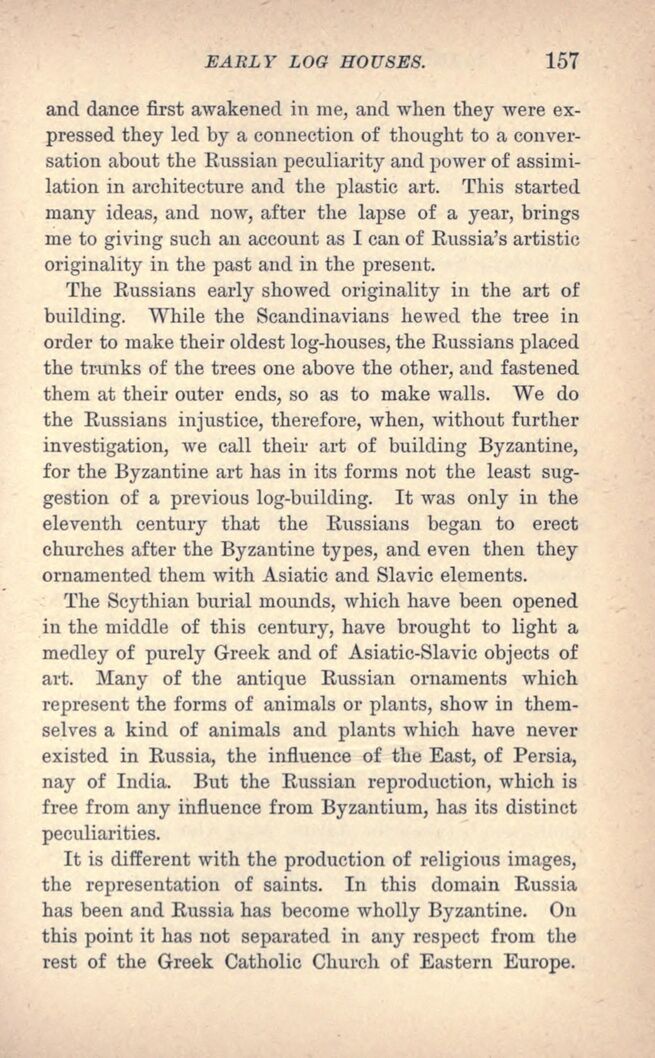
Full resolution (JPEG) - On this page / på denna sida - IX

<< prev. page << föreg. sida << >> nästa sida >> next page >>
Below is the raw OCR text
from the above scanned image.
Do you see an error? Proofread the page now!
Här nedan syns maskintolkade texten från faksimilbilden ovan.
Ser du något fel? Korrekturläs sidan nu!
This page has been proofread at least once.
(diff)
(history)
Denna sida har korrekturlästs minst en gång.
(skillnad)
(historik)
and dance first awakened in me, and when they were
expressed they led by a connection of thought to a
conversation about the Russian peculiarity and power of
assimilation in architecture and the plastic art. This started
many ideas, and now, after the lapse of a year, brings
me to giving such an account as I can of Russia’s artistic
originality in the past and in the present.
The Russians early showed originality in the art of
building. While the Scandinavians hewed the tree in
order to make their oldest log-houses, the Russians placed
the trunks of the trees one above the other, and fastened
them at their outer ends, so as to make walls. We do
the Russians injustice, therefore, when, without further
investigation, we call their art of building Byzantine,
for the Byzantine art has in its forms not the least
suggestion of a previous log-building. It was only in the
eleventh century that the Russians began to erect
churches after the Byzantine types, and even then they
ornamented them with Asiatic and Slavic elements.
The Scythian burial mounds, which have been opened
in the middle of this century, have brought to light a
medley of purely Greek and of Asiatic-Slavic objects of
art. Many of the antique Russian ornaments which
represent the forms of animals or plants, show in
themselves a kind of animals and plants which have never
existed in Russia, the influence of the East, of Persia,
nay of India. But the Russian reproduction, which is
free from any influence from Byzantium, has its distinct
peculiarities.
It is different with the production of religious images,
the representation of saints. In this domain Russia
has been and Russia has become wholly Byzantine. On
this point it has not separated in any respect from the
rest of the Greek Catholic Church of Eastern Europe.
<< prev. page << föreg. sida << >> nästa sida >> next page >>